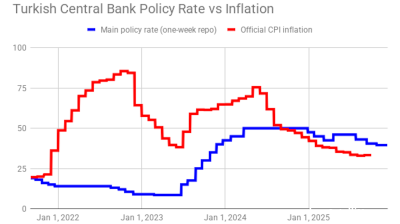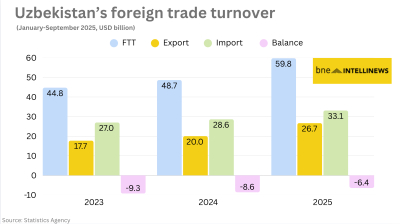The S&P Global Russia Composite PMI Output Index (manufacturing and services) posted 48.2 in May 2022, up from 44.4 in April and 37.7 in March, but still in contraction territory below the 50-point threshold, to signal a further, albeit slower, decline in Russian private sector output.
As followed by bne IntelliNews, the manufacturing PMI alone was back in positive territory in May posting an expansion of 50.8, up from 48.2 in April despite the war shocks.
Overall, despite Russian GDP slipping into recession in April, the analysts started to cautiously improve their outlooks on 2022, but others warned that deeper shocks are still to come from the EU’s sixth sanction package.
On the services side, the seasonally adjusted S&P Global Russia Services PMI Business Activity Index registered 48.5 in May, up from 44.5 in April, remaining in the negative territory.
“The latest index reading signalled a modest contraction in business activity across the Russian service sector that was the slowest since February. Still, firms once again noted weak client demand stemming from economic sanctions and the impact of inflation on customer spending,” the report commented.
The fall in services output reflected weak domestic and foreign demand conditions, with total inflows of new work and new export business decreasing sharply. However, despite the service firms cutting their workforce numbers as the level of incomplete business declined at the fastest pace in over two years, business confidence inched up “amid hopes of an improvement in domestic economic conditions over the coming year”.
Cost burdens continued to increase for the service providers in May, with the rate of input price inflation being among the steepest in over 20 years. The service firms attributed higher costs to greater fuel and imported input prices, as well as wage pressures.
Data

Turkey's central bank remains cautious, delivers 100bp rate cut
Decision comes on eve of next hearing in trial that could dislodge leadership of opposition CHP party.

Polish retail sales return to solid growth in September
Polish retail sales grew 6.4% year on year in constant prices in September, picking up from a 3.1% y/y rise in August, the statistics office GUS said.

Uzbekistan’s nine-month foreign trade nears $60bn
Export growth of 33% and import expansion of 16% y/y produce $6.4bn deficit.

Hungary’s central bank leaves rates unchanged
National Bank of Hungary expects inflation to fall back into the tolerance band by early 2026, with the 3% target sustainably achievable in early 2027 under the current strict policy settings.




